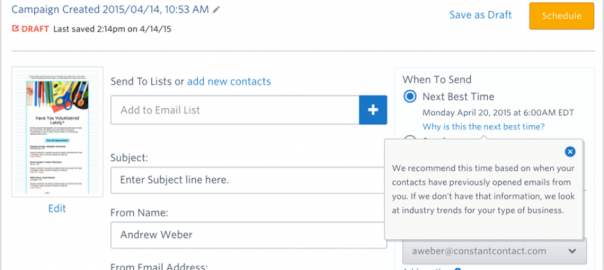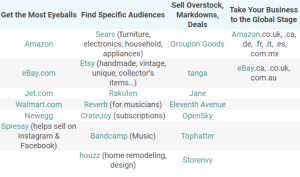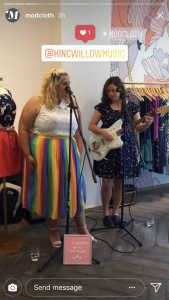![]()
You can admit it.
Tracking your emails and monitoring things like opens and clicks doesn’t exactly sound like the most exciting part of marketing your business.
You work hard on your emails. You rack your brain to find the right words, and create a message you think your subscribers will enjoy.
So once you hit send, you’re happy give yourself a pat on the back and call it a day.
Email marketing doesn’t end with a send.
One of the biggest benefits of using an email marketing service to do your email marketing is the ability to track key metrics like opens, clicks, bounce rates, and unsubscribes.
But to really use email tracking effectively you need to go beyond vanity metrics — you need to take the information in your reports do something with it.
Let’s look at five examples of how email tracking can create new opportunities for your business.
1. Reward your most engaged subscribers
Where to look: Your clicks.
Why: Seeing which subscribers are actively engaging with your information and clicking on your links will help you determine who is most engaged with your business. Recent data from Constant Contact revealed that 44 percent of all click-throughs come from 10 percent of clickers. These are your “super fans” and the people you want to reach out to drive sales and spread positive word-of-mouth for your business.
What to do next: Take the contacts that have interacted with recent mailings, and add them to a list of VIP contacts. Send this group a special mailing to reward their interest. This could be an exclusive offer, a piece of helpful content, or information about joining a brand ambassador program.
Here’s a special offer Allegria Spa sent to their list of VIPs:

2. Reengage those who have lost interest
Where to look: Did Not Opens
Why: Not everyone who joins your list will stay engaged, but reminding subscribers of their importance and giving them a chance to reconnect with you could regain their attention. This can increase your open rates for future emails and ensure your business stays top of mind with contacts that have started to tune you out.
What to do next: Send a special offer or incentive to encourage subscribers to reconnect with you. You could also send them a quick survey to gather more insight into what’s interesting to them. Ask two or three quick questions, like what products/services they are most interested in and how often they want to hear from you.
Here’s how Basil Tree Catering sent a “Because We Miss You” email with a $ 25 coupon to reconnect with their subscribers:

3. Remove those you can no longer reach
Where to look: Bounced emails
Why: Emails bounce for a variety of reasons. Things like server errors, full mailboxes, and out of office messages often cause temporary issues, but out-of-date or nonexistent addresses are often permanent problems. Regularly removing contacts with ongoing issues will help you maintain a strong delivery rate and increase your open rate.
What to do next: Export a list of bounced emails and look for those with ongoing issues. If you have an alternative way of reaching a contact, via phone or in person, follow up with them for updated information. If you have contacts that consistently bounce, remove them from your list.

4. Reevaluate your sending schedule
Where to look: Open rate and unsubscribes
Why: Sticking to a consistent schedule can help manage your subscribers’ expectations of when they’ll hear from you. But how confident are you that you’re sending emails as often as your subscribers like? And do you know what time and day to send to get the best results? Getting your timing and frequency right will result in more eyes on your emails.
What to try next: Look to the industry trends to see what time and day typically perform best for your industry. After sending an email at this time, check back with your reports to see if your open rates are higher than usual. Constant Contact also has a new Best Time to Send feature, which helps you send at an optimal time based on when contacts are most likely to open your email.
Here’s a look at how to schedule your messages ahead of time within your Constant Contact account:

To find the right frequency, you can survey your subscribers to ask how often they want to hear from you. While long-form newsletters used to be the norm, you should consider sending more frequent newsletters with less information to accommodate mobile readers. Just make sure you aren’t turning people off with too many messages — if you see a spike in unsubscribes, dial back on your sending frequency.
5. Reconsider your design
Where to look: Mobile open rate, click-through rate
Why: With more than half of all emails now opened on a mobile device, many small business owners need to give their emails a makeover. Switching to a mobile-friendly template makes it easier for readers to view your emails from any device. Following mobile best practices also encourages people to take action on the information you’re sending out.
What to try next: We recently discovered emails with about 20 lines of text and three or fewer images receive the highest click-through rate. With Constant Contact, you can track your mobile opens to see what percentage of your audience is opening emails from their mobile device. Before you send your email, send a test email to yourself and make sure your call to action appears prominently even on a small screen. After making these layout changes, check back with your click-throughs to see if more people are engaging with your links.
Here’s some advice from fashion retailer, No Rest for Bridget, on changing your strategy:
“I think the best change we ever made was to our layout. You only have a certain amount of time to get people’s attention, so we want to find the most efficient way to get our message out. We normally do a main product feature with a graphic and then a few small features that we’re trying to push. That’s been working really well for us.” – Kolbie Richardson, online manager
Take a look at an example of a recent No Rest for Bridget email with their updated layout:

What can you do today?
Tracking your emails can help you stay on top of your marketing and identify new opportunities for your business. Try out one of these five ideas and check back with your reports to see if your actions are making an impact.
Email reports aren’t the only tool you can use to track your emails’ impact. Google Analytics is another great tool to help you measure the influence of your marketing.
If you’re using Constant Contact, you can easily add Google Analytics tracking to your email by adding a custom tracking code. This will help you see the amount of traffic that is driven to your website from your email.
Have any email tracking questions we didn’t cover? Leave your questions in the comments.
Digital & Social Articles on Business 2 Community(97)
Report Post




